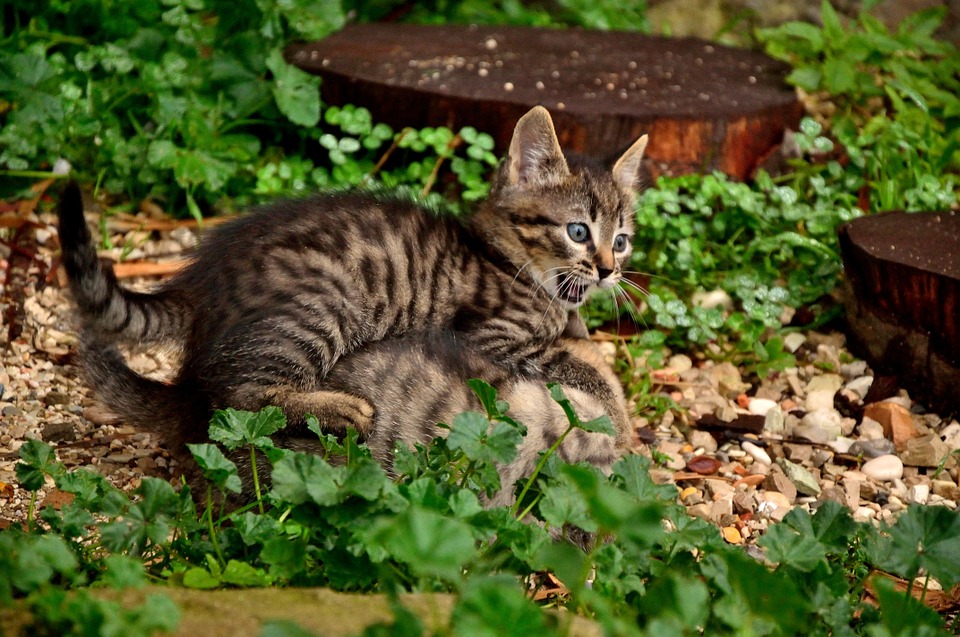This article will guide you through the challenges of keeping cats out of your garden. From understanding feline behaviour to implementing a range of deterrents, we'll explore practical strategies for creating a cat-free zone, allowing you to enjoy your garden without unwanted furry visitors.
Part 1: Unmasking the Cat: Understanding Feline Behaviour

1.1. The Allure of the Outdoors
Cats, by nature, are driven by their senses. They are mesmerized by the dynamic symphony of sights, sounds, and scents emanating from the outdoors. Your garden, with its lush greenery, chirping birds, and intriguing hidden corners, presents an irresistible playground to their curious minds.
1.2. The Need for Enrichment: A Cat's Instincts
Cats are natural hunters, explorers, and territory markers. Their innate instincts are deeply ingrained in their behaviours. Your garden, teeming with tempting prey like birds and small mammals, satisfies their primal urges and becomes a haven for these instinctual drives.
1.3. Territorial Instincts: Marking Their Domain
Cats are highly territorial creatures, and your garden may be perceived as an extension of their personal domain. This strong instinct often manifests in undesirable behaviour, such as spraying or digging, as they strive to assert their ownership through scent marking and claiming their territory.
Part 2: Building Boundaries: Physical Deterrents

2.1. Fencing and Netting: Creating Impenetrable Walls
Solid Fencing: A solid fence, at least 6 feet high, can effectively deter cats. Ensure there are no gaps or openings, no matter how small, where a cat could squeeze through. Choose a fence material that is smooth and difficult to climb, such as wood or metal.
Mesh Netting: Fine-mesh netting, typically used for fruit cages, can be placed over areas where you want to exclude cats, such as flowerbeds or vegetable patches. Choose a mesh size that is small enough to prevent cats from squeezing through.
Electric Fencing: While effective in deterring cats, electric fencing can be harmful to animals and should only be used as a last resort. Ensure it complies with local regulations and is installed professionally to minimize risks.
2.2. Motion-Activated Sprinklers: A Shocking Deterrent
Motion-activated sprinklers use sensors to detect movement and spray water in the direction of the intruder, providing a non-harmful but effective deterrent. The sudden spray of water startles cats and discourages them from returning.
2.3. Plants and Hedges: Creating a Natural Barrier
Thorny Plants: Roses, barberry, and holly create a natural barrier with their prickly thorns. Their uncomfortable texture deters cats from venturing into these areas.
Dense Hedges: Evergreen hedges, such as laurel or yew, create a physical barrier, making it harder for cats to access your garden. Their dense foliage makes it difficult for cats to see through and navigate.
Part 3: Sensory Warfare: Utilizing Scents and Sounds
3.1. Scents and Smells: Cats' Disliked Aromas
Citrus Peels: Cats dislike the strong scent of citrus fruits. Scatter orange or lemon peels around your garden, particularly near areas where cats frequently enter. The pungent aroma will act as a natural repellent.
Peppermint Oil: Dilute peppermint oil with water (approximately 10 drops per 1 cup of water) and spray it around areas where you want to deter cats. The strong minty scent is generally disliked by cats.
Commercial Repellents: Many commercially available cat repellents use scents that cats find unpleasant. Look for products containing natural ingredients, like citrus, peppermint, or rosemary, and follow the manufacturer's instructions for safe use.
3.2. Visual Deterrents: Startling and Discouraging
Mirrors: Cats are sensitive to movement and reflection. Place mirrors strategically around your garden, particularly near areas where cats frequently enter. The sudden flashes of their reflection will startle them and encourage them to avoid those areas.
Motion-Activated Lights: Lights that turn on when they detect movement can be a good deterrent, especially at night. The sudden burst of light will startle cats and make them feel less comfortable in those areas.
3.3. Sonic Deterrents: Unwelcome Noises
Ultrasonic Devices: These devices emit high-frequency sounds that are unpleasant to cats but inaudible to humans. They are particularly effective in deterring cats from specific areas, such as flowerbeds or vegetable patches.
Motion-Activated Sounds: Some devices play loud, jarring sounds when they detect movement, scaring cats away. However, these sounds can be unpleasant for humans and may not be suitable for all environments.
Part 4: Nature's Allies: Harnessing Natural Repellents
4.1. Planting Cat-Repelling Plants: A Green Solution
Rue: This pungent herb, with its strong and somewhat unpleasant aroma, is said to deter cats. Plant it around your garden borders or near areas where cats frequently enter.
Lavender: Cats dislike the strong aroma of lavender. Plant lavender bushes around your garden to deter them from venturing into these areas.
Coleus canina: Commonly known as "Scaredy Cat Plant," this plant emits a scent that cats find unpleasant. Plant it around your garden borders or near areas where cats frequently enter.
4.2. Using Essential Oils: A Potent Solution
Eucalyptus: The scent of eucalyptus oil is known to deter cats. You can dilute a few drops of eucalyptus oil in water and spray it around your garden.
Tea Tree Oil: Tea tree oil is another effective essential oil for keeping cats away. Similar to eucalyptus oil, dilute it in water and spray it around your garden.
Rosemary: Rosemary oil can also be used as a natural deterrent. Dilute it in water and spray it around your garden, particularly near areas where cats frequently enter.
Part 5: Other Techniques: Keeping the Garden Uninviting
5.1. Keeping Your Garden Tidy: Eliminating Temptations
Remove Temptations: Eliminate sources of food, water, and shelter for cats, such as open bins, bird feeders (consider using cat-proof feeders), and dense foliage. A tidy garden with fewer hiding places will make it less appealing to cats.
Clear Debris: Remove any clutter or debris that could provide a hiding place for cats. Regularly rake up leaves, twigs, and other debris to create a less appealing environment.
Keep Garden Neat: Trim back overgrown vegetation and maintain a tidy garden to discourage cats from using it as a toilet. Regularly trim your bushes and remove any fallen fruit or vegetables to maintain a clean and tidy appearance.
5.2. Providing Alternative Entertainment: Redirect Their Instincts
Catnip: Plant catnip in a separate area away from your garden to satisfy their urge for scent marking and scratching. Create a designated "catnip zone" away from your precious flower beds.
Cat Trees and Scratching Posts: Place cat trees and scratching posts near your home to give cats a more appropriate outlet for their instincts. Offer them a designated area for scratching and climbing, making your garden less tempting.
Part 6: FAQs: Addressing Common Concerns
6.1. What are the most effective ways to deter cats from digging in my flowerbeds?
Mesh Netting: Place fine-mesh netting over your flowerbeds to create a physical barrier.
Thorny Plants: Plant thorny plants, such as roses or barberry, around the perimeter of your flowerbeds.
Citrus Peels: Scatter citrus peels around the flowerbeds. The strong scent is generally disliked by cats.
6.2. Are cat repellents safe for other animals?
Always check the label of cat repellents for safety information. Some repellents can be harmful to other animals, such as dogs, birds, and bees. Choose repellents with natural ingredients and follow the manufacturer's instructions carefully.
6.3. How do I prevent cats from using my garden as a toilet?
Keep Garden Tidy: A clean and tidy garden is less inviting to cats. Regularly remove any fallen fruit, vegetables, or debris.
Cat Repellents: Consider using cat repellents containing natural ingredients, like citrus or peppermint.
Cat-Repelling Plants: Plant cat-repelling plants, such as rue or lavender, around your garden.
6.4. Will these deterrents work on all cats?
No, some cats are more stubborn than others. Some may be easily deterred, while others will require a combination of methods. Persistence and a multi-pronged approach are often necessary for success.
6.5. How do I create a cat-friendly space in my garden?
Designated Catnip Area: Plant catnip in a separate area away from your main garden.
Cat Tree: Provide a tall cat tree with scratching posts and perches for climbing and exploring.
Bird Bath: Fill a bird bath with fresh water for cats to drink and play in.
6.6. Should I ever use force to remove a cat from my garden?
No, never use force to remove a cat. This can scare them and cause them to become aggressive. Use humane deterrents and encourage them to leave.
6.7. How can I make my garden less appealing to cats?
Remove Food Sources: Securely store any pet food or birdseed.
Remove Water Sources: Avoid leaving out bowls of water for your pets in your garden.
Keep it Tidy: Regularly remove any clutter, debris, and fallen fruit or vegetables.
By understanding feline behaviour and implementing these practical strategies, you can create a cat-free zone in your garden, allowing you to enjoy your outdoor space without unwelcome furry visitors. Remember, patience and persistence are key to success.
Everyone is watching

Are Cat Ribs Flexible? Understanding Their Anatomy
CATS & KITTENSThis article delves into the fascinating world of feline anatomy, exploring the flexibility of cat ribs and ho...

Can Cats Eat Bananas? (Everything You Need to Know)
CATS & KITTENSThis article dives into the intriguing question of whether cats can safely enjoy the sweet, yellow fruit, bana...

Cat Lifespan: How Long Do Cats Live?
CATS & KITTENSThis comprehensive guide explores the factors influencing the lifespan of our feline companions, providing ins...

Can Cats Get COVID-19? What You Need to Know
CATS & KITTENSThis article will delve into the fascinating world of feline COVID-19 susceptibility. We'll explore whether ca...

Can Cats Eat Eggs? A Complete Guide to Egg Safety for Your Feline Friend
CATS & KITTENSWhen it comes to treating our furry companions, we all want to ensure we're doing what's best for them. Eggs...
